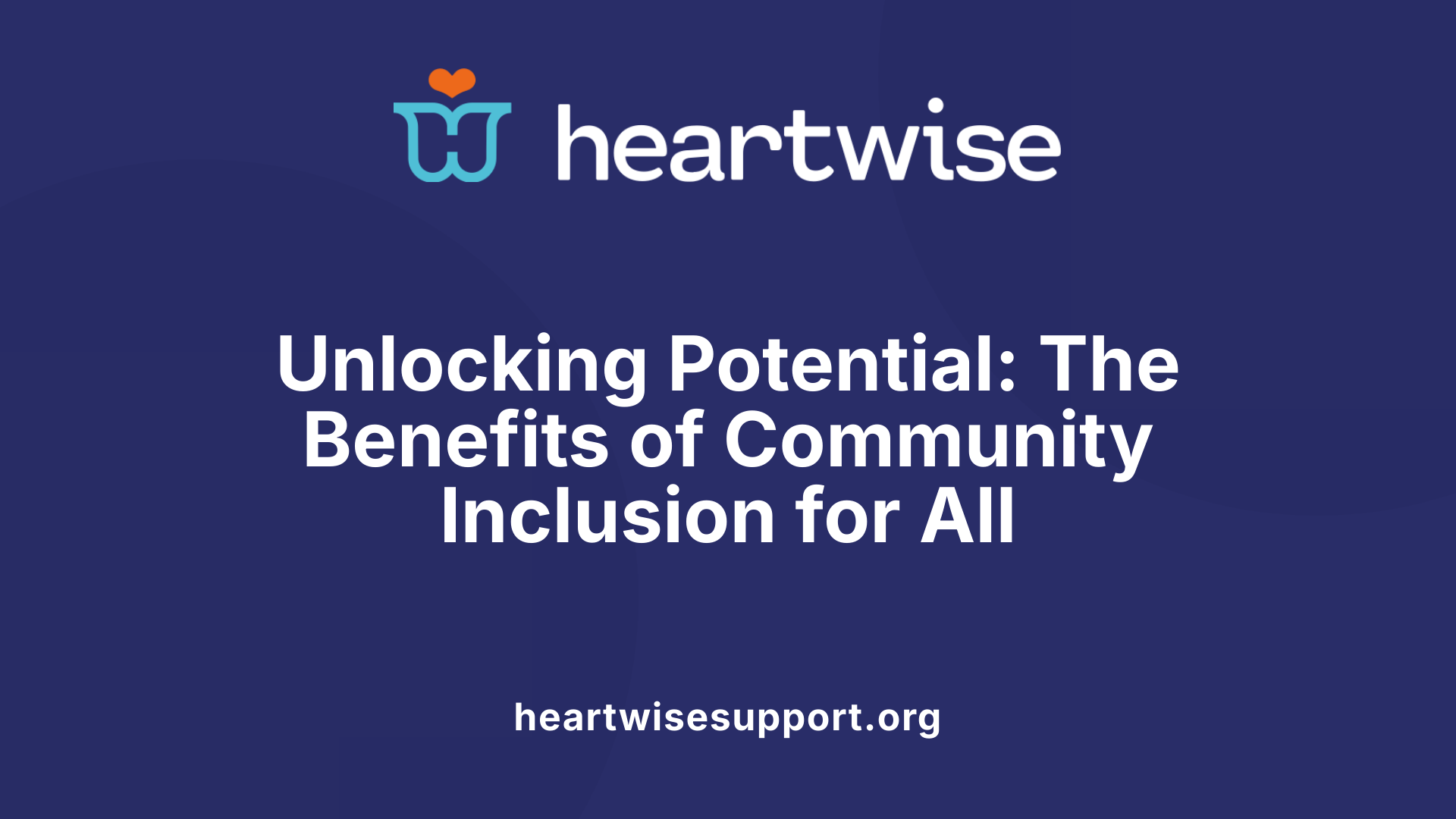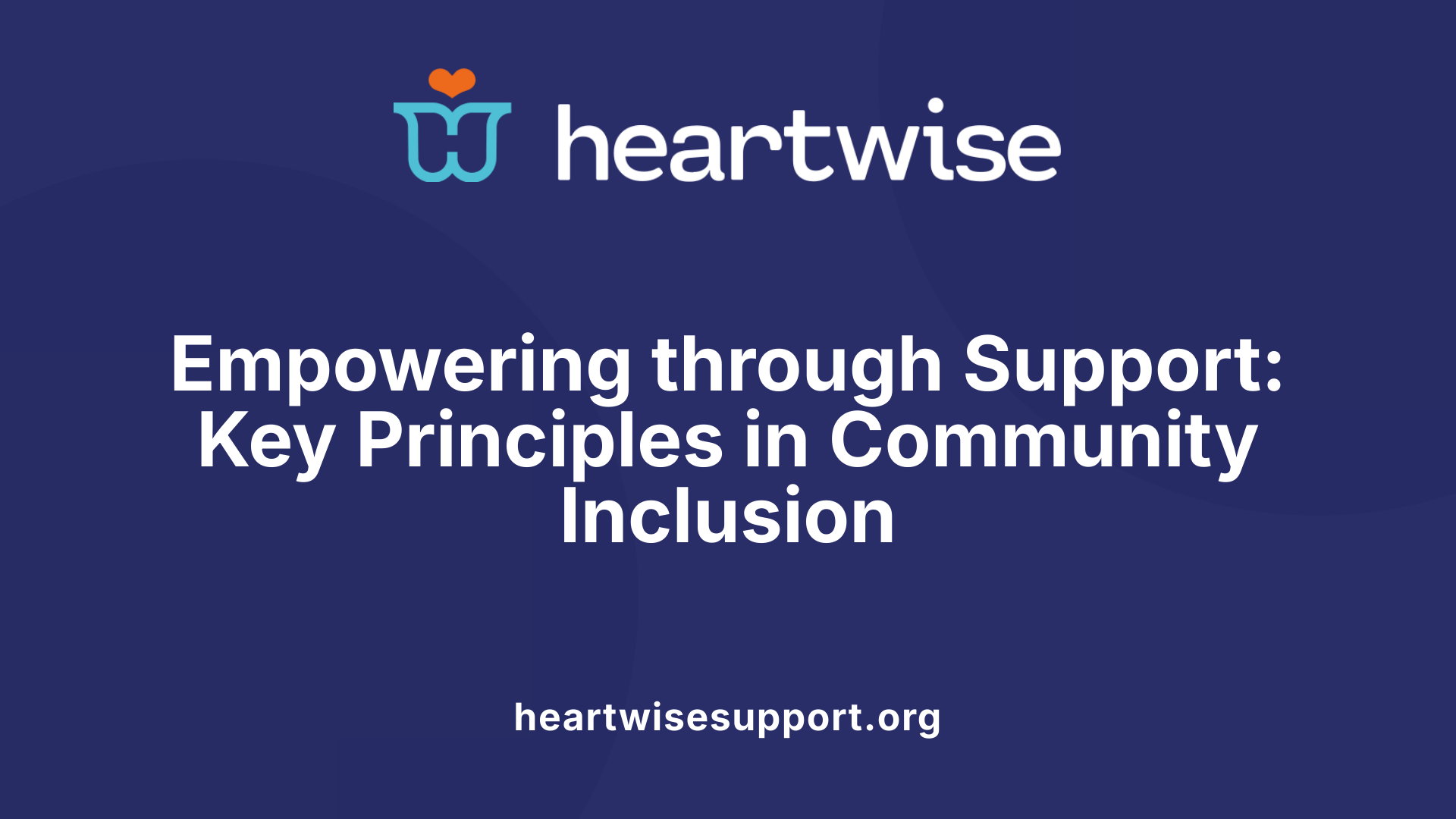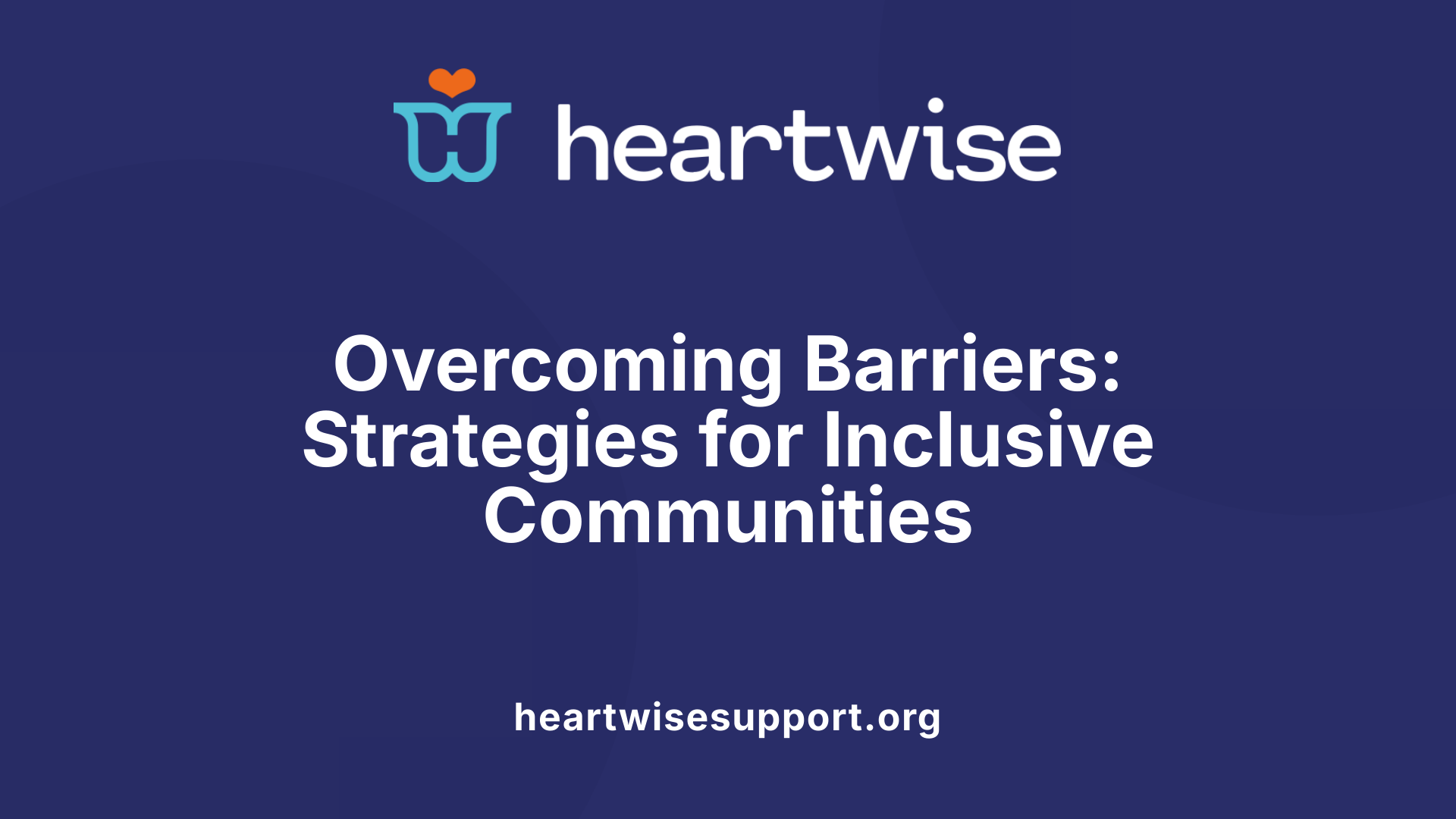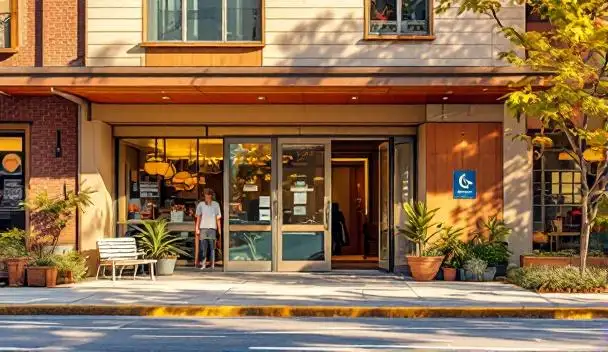Understanding Community Inclusion and Its Significance
Community inclusion programs are vital initiatives designed to ensure that individuals of all abilities are valued, engaged, and able to participate fully in all aspects of community life. These programs are rooted in principles of equity, accessibility, and respect, fostering environments where diversity is celebrated, and everyone has opportunities to thrive. Legislation such as the Americans with Disabilities Act (1990), the Supreme Court's Olmstead decision (1999), and policies like the Workforce Innovation and Opportunity Act (2014) underpin these efforts, promoting rights-based, community-centered approaches to living, working, and socializing. This article explores the numerous benefits of community inclusion, how initiatives support societal engagement, and the strategies that ensure successful integration for everyone.
The Multifaceted Benefits of Community Inclusion

What are the benefits of community inclusion for individuals with disabilities?
Community inclusion offers a wide array of advantages for individuals with disabilities. It fosters social integration, helping people build meaningful relationships and develop a sense of belonging within their communities.
By promoting independence and personal growth, community inclusion enables individuals to exercise choice and control over their lives, leading to improved self-esteem and confidence.
Access to community resources—such as recreational activities, employment opportunities, and educational programs—is a cornerstone of inclusive environments. These opportunities allow individuals to participate actively, gain new skills, and contribute meaningfully.
Participating in community life significantly reduces feelings of loneliness, isolation, and stigmatization. It enhances mental well-being by supporting physical activity, social connections, and purpose.
Legislative efforts like the Americans with Disabilities Act (ADA) and initiatives such as “Spectacular Saturdays” exemplify governmental and organizational commitments to equitable participation. These efforts help create environments where diversity is valued and everyone’s talents are recognized.
Ultimately, community inclusion enriches society by embracing diverse perspectives, talents, and experiences. It empowers individuals with disabilities to lead fuller, healthier lives while strengthening community cohesion.
Effective Approaches and Principles in Community Inclusion

What are the key principles and strategies behind effective community inclusion programs?
Successful community inclusion programs are built on fundamental values such as accessibility, respect, diversity, and equity. These principles ensure that all individuals, regardless of their abilities, are recognized and valued for their unique contributions.
A central strategy involves providing the necessary supports and accommodations to remove barriers and facilitate participation. This includes physical modifications, assistive technologies, and tailored services that enable full engagement in employment, housing, education, and recreational activities.
Education and training are vital in fostering awareness and understanding within communities, helping to challenge misconceptions and promote acceptance. Creating accessible environments involves not just physical access but also ensuring that information and communication methods are inclusive.
Programs emphasize individualized, real-world instruction, which encourages the development of social and practical skills relevant to everyday life. Utilizing natural supports—such as community members, friends, or family—reinforces integration and diminishes reliance on formal supports.
Legal and policy frameworks are fundamental to these efforts. Laws like the Americans with Disabilities Act (ADA), landmark court decisions such as the Olmstead ruling, and federal initiatives mandate equitable treatment, prohibit discrimination, and promote community-based services.
The overall goal is to empower individuals with intellectual and developmental disabilities to participate as active, respected members of society. This involves exercising self-determination—making personal choices and exercising control over one's life—and fostering community-driven initiatives that reflect the preferences and aspirations of those served.
How do community programs foster self-determination and empowerment?
Community programs cultivate self-determination by offering individuals opportunities to make decisions about their daily lives and future goals. These programs encourage self-advocacy, helping individuals articulate their needs, desires, and rights confidently.
Training in decision-making skills, resource management, and problem-solving enables people to gain independence and control over their housing, employment, and social activities. This empowerment process builds self-esteem and reinforces the belief that they can influence their circumstances.
Moreover, recognizing and harnessing individual talents and interests guides people toward roles and activities that provide purpose and satisfaction. Community programs support creating environments where personal preferences are respected, choices are honored, and barriers are systematically addressed.
By fostering autonomy and confidence, these initiatives help individuals develop a sense of ownership over their lives, which is essential for genuine empowerment and ongoing personal growth.
In what ways do community inclusion initiatives build bridges between people with and without disabilities?
Community inclusion initiatives promote social cohesion by creating shared spaces and activities that bring together people with and without disabilities. These efforts foster interactions in settings such as integrated sports leagues, accessible playgrounds, community events, and shared educational experiences.
Creating accessible environments that facilitate natural interactions helps reduce prejudices and misconceptions, opening pathways for genuine friendships, understanding, and mutual respect.
Educational campaigns and community activities help break down stereotypes, showcasing the talents and contributions of individuals with disabilities. Initiatives like unified sports foster teamwork, cooperation, and shared achievement.
Supportive services and ongoing community education cultivate a culture of acceptance, celebrating diversity and emphasizing the value of every individual.
These efforts not only improve the social lives of individuals with disabilities but also enrich communities by fostering empathy, humility, and a greater appreciation for differences. Ultimately, they build bridges that promote a more inclusive, cohesive society.
Challenges, Resources, and Policy Support for Community Inclusion

What barriers hinder community inclusion and how can they be addressed?
Barriers to community inclusion often stem from attitudinal issues like fears of rejection, safety misconceptions, and biases that foster discrimination against people with disabilities. Additionally, individual challenges such as communication difficulties and limited mobility can restrict participation.
Addressing these obstacles requires a comprehensive approach. Community education programs play a vital role in raising awareness about the capabilities and rights of individuals with disabilities. Positive attitude shifts can be encouraged through campaigns that highlight success stories and promote understanding. Providing assistive technologies and accessible infrastructure helps overcome physical and communication barriers, enabling greater independence.
Developing tailored social skills training and forming individualized action plans for barrier removal are crucial steps. Such plans involve identifying specific challenges, brainstorming solutions like transportation adjustments, and implementing inclusive activities. Ongoing assessment, community engagement, and legislative protections ensure persistent progress toward environments where full participation is possible for all.
What role do policies and legislation play in supporting community inclusion?
Legislation serves as the backbone of community inclusion efforts by establishing legal rights and standards. The Americans with Disabilities Act (ADA) (1990) mandates equal access to public spaces, employment opportunities, and services, ensuring that physical and programmatic barriers are minimized. The Supreme Court's Olmstead decision (1999) reinforces that unnecessary segregation of individuals with disabilities constitutes discrimination, emphasizing the importance of community-based living and supports.
Furthermore, the Home and Community-Based Services (HCBS) Final Rule (2014) advocates for community living as the preferred arrangement, setting standards for Medicaid-funded services. These laws and court rulings provide frameworks that motivate policies, allocate funding, and set accountability measures to promote inclusive environments.
By embedding inclusion principles into law, policies help eliminate systemic barriers, foster equal opportunities, and guide sectors toward practices that support active community engagement. They also serve to incentivize organizations and communities to adopt accessible designs, inclusive employment practices, and integrated housing options.
What resources are available to promote community inclusion and support individuals in their community life?
Supporting community inclusion relies on a variety of accessible resources. Online platforms like Disability Benefits 101 (DB101) and Housing Benefits 101 (HB101) offer practical, state-specific information about benefits, employment, healthcare, and housing options. These tools empower individuals with disabilities and their advocates to make informed choices.
Organizations such as the Developmental Disabilities Supports Division (DDSD) provide technical assistance, training programs, and community outreach initiatives that foster social connections and independence. Support services include accessible transportation, supported living arrangements, employment support programs, and peer networks designed to cultivate social participation.
Educational resources such as webinars, reports, and toolkits from advocacy groups illuminate best practices, success stories, and strategic approaches to community inclusion. Moreover, community-based programs—like supported living, integrated day services, and inclusive recreational activities—are tailored to personal goals and preferences, ensuring meaningful participation.
Why is community inclusion crucial for fostering societal diversity, equity, and acceptance?
Community inclusion plays a central role in nurturing societal diversity and promoting equity and acceptance. It ensures that all members, regardless of their abilities or cultural backgrounds, can actively participate in various societal domains.
By facilitating participation in social, educational, employment, and civic activities, inclusive communities challenge stereotypes and prejudices that often lead to discrimination. Valuing diverse talents and experiences enriches society by encouraging mutual respect and understanding.
Inclusive environments foster meaningful relationships, shared experiences, and a sense of belonging, which are essential for social cohesion. They promote empathy and humility, helping communities recognize the importance of diverse perspectives.
As a society becomes more inclusive, it benefits from increased innovation, cultural richness, and social justice. The resulting environment upholds human dignity, empowers marginalized groups, and cultivates a culture where everyone’s full participation is normalized. Ultimately, community inclusion is a vital vehicle for creating equitable and accepting societies that celebrate diversity and uphold human rights.
Fostering Communities of Belonging and Equity
In conclusion, community inclusion programs serve as essential mechanisms for building equitable, diverse, and vibrant societies. They empower individuals with disabilities by promoting independence, social skills, and personal fulfillment, while also enriching communities through diversity and shared participation. Supported by legal frameworks, innovative strategies, and resource networks, these initiatives break down barriers and foster environments of respect, acceptance, and full societal engagement. As communities continue to evolve toward inclusiveness, the importance of ongoing education, policy support, and community-driven efforts remains paramount. Embracing these principles ensures a future where everyone has the opportunity to live, learn, work, and thrive within a supportive and inclusive society.
References
- What is the Value of Community Inclusion?
- The Importance of Community Inclusion - Central Oregon Collective
- Module 5- Community Inclusion - IDHS
- [PDF] HCBS Settings Rule: Community Inclusion & Integration - Utah.gov
- Community Inclusion – New Mexico Health Care Authority
- What Is Community Inclusion & Why Is It a Win-Win Scenario?
- What Is Community Integration? - Casebook PBC
- Positive Impact of Disability on Community | ALSO Oregon











